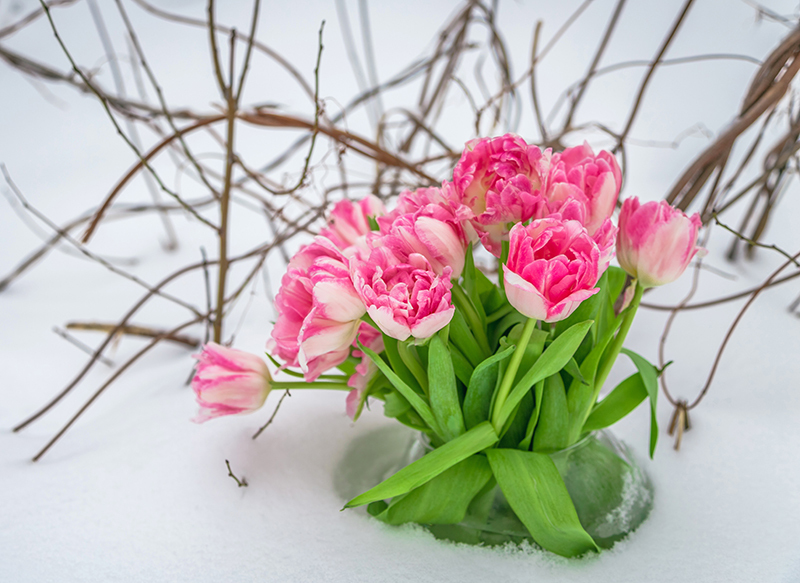Reveal the Message of Your Birth Flower and Its Relevance to Your Life
Posted on 15/08/2025
Reveal the Message of Your Birth Flower and Its Relevance to Your Life
Have you ever wondered about the secret message your birth flower holds? Much like zodiac signs and birthstones, birth flowers offer unique insights into your personality, destiny, and even your approach to life's challenges. Understanding the meaning behind your birth flower can add a layer of significance to your life journey, cultivating self-awareness and personal growth.
What Are Birth Flowers?
Birth flowers are blooms that correspond to each month of the year. Originating from ancient customs and folklore, each month's flower symbolizes a variety of traits, virtues, and messages. These flowers were often used in Victorian times as part of the "language of flowers," a way to communicate thoughts and feelings when words would not suffice.
The unique message of your birth flower offers greater insight than mere aesthetics. By unlocking the meanings and symbolism attached to your birth flower, you gain access to an age-old form of self-expression and understanding.
List of Birth Flowers by Month
- January - Carnation & Snowdrop
- February - Violet & Primrose
- March - Daffodil & Jonquil
- April - Daisy & Sweet Pea
- May - Lily of the Valley & Hawthorn
- June - Rose & Honeysuckle
- July - Larkspur & Water Lily
- August - Gladiolus & Poppy
- September - Aster & Morning Glory
- October - Marigold & Cosmos
- November - Chrysanthemum
- December - Narcissus & Holly

The Deeper Meaning of Your Birth Flower
Each flower harbors symbolic messages and traits. By discovering your birth flower's meaning, you may see reflections of your strengths, unique virtues, and life's journey. Here's a comprehensive look at what each birth month flower reveals:
January: Carnation and Snowdrop
Carnations stand for fascination, loyalty, and deep love. If you were born in January, your birth flower's message relates to tenacity and a loving heart. Carnations come in various colors, which indicate different meanings - pink for affection, red for admiration, and white for pure love.
Snowdrops emerge through snow, symbolizing hope and rebirth. A January-born individual often shines with resilience and the ability to bring light into dark moments, much like the first snowdrop of the year.
February: Violet and Primrose
Violets denote modesty, spirituality, and faithfulness. If you're a February birthday, you're likely loyal, creative, and have an inner wellspring of quiet strength.
Primroses represent young love and devotion, highlighting the nurturing side of your personality. Primrose people often form lasting bonds and value genuine connections.
March: Daffodil and Jonquil
Daffodils are harbingers of spring and new beginnings. Their message is one of optimism, renewal, and joy. Those with a daffodil birth flower may have a sunny disposition and are often the first to inspire hope in others.
Jonquils, a type of narcissus, further symbolize cheerfulness and desire. If Jonquil is your flower, you might thrive on new experiences and have a zest for life.
April: Daisy and Sweet Pea
The daisy is synonymous with innocence, purity, and loyal love. April-born individuals are often straightforward, genuine, and bring a fresh perspective to their relationships and endeavors.
Sweet peas convey gratitude and blissful pleasure, suitable for those who bring happiness and contentment wherever they go.
May: Lily of the Valley and Hawthorn
Lily of the Valley signifies humility, sweetness, and the restoration of happiness. If this is your birth flower, you have a gentle strength and a talent for uplifting others' spirits.
Hawthorn blossoms stand for hope and supreme happiness. People represented by this bloom are emotionally resilient, able to create joy amidst adversity.
June: Rose and Honeysuckle
Roses are famous for expressing love and passion. Each color represents a different facet of affection, and as a June-born, you likely possess a rich emotional life and an appreciation for beauty in both people and experiences.
Honeysuckle embodies bonds of love and the sweetness of life. This flower's message hints at your magnetic personality and the strong connections you foster with others.
July: Larkspur and Water Lily
Larkspur symbolizes positivity and open-heartedness. If this flower represents you, you're likely cheerful and bring tranquility to your social circles.
Water lilies indicate purity and enlightenment, signifying a deep, reflective soul with the ability to rise above challenges gracefully.
August: Gladiolus and Poppy
Gladiolus stands for strength, moral integrity, and infatuation. People with this birth flower are often admired for their unwavering dedication and resilience.
Poppies are associated with imagination and peaceful rest, ideal for those gifted with creative abilities and vivid inner worlds.
September: Aster and Morning Glory
Asters symbolize wisdom, valor, and faith. If you're a September baby, your birth flower message suggests maturity, insight, and loyal friendship.
Morning glories represent affection and the fleeting beauty of life, reminding you to cherish every moment.
October: Marigold and Cosmos
The marigold is known for its association with creativity and passion. October-born individuals are often driven and bring vibrancy to every project they undertake.
Cosmos expresses harmony, peace, and modesty. If this bloom denotes your birth, you likely strive for balance and beauty in your surroundings.
November: Chrysanthemum
Chrysanthemums symbolize joy, longevity, and optimism. November-born individuals reflect warmth and a positive spirit, lighting up the lives of those around them even in colder seasons.
December: Narcissus and Holly
Narcissus (Paperwhite) stands for self-esteem and rebirth, hinting at the confidence and ability to reinvent oneself that December-born people often display.
Holly conveys protection and domestic happiness, indicating a nurturing side and a dedication to keeping loved ones safe and content.
Why Knowing Your Birth Flower's Message Matters
Understanding your birth flower's meaning can:
- Enhance self-awareness: Gaining knowledge about the traits associated with your birth flower might help you identify natural strengths and qualities.
- Foster personal growth: Reflecting on your birth flower's symbolism can encourage you to embrace and develop those positive traits.
- Guide relationships: Realizing how your personality nurtures or interacts with others can strengthen your bonds and open new avenues for connection.
- Add personalized meaning to milestones: Including your birth flower in celebrations, milestones, or decor can deepen the significance of those moments.
Birth Flower Symbolism vs. Zodiac Signs
While zodiac signs focus on astronomical positions at your birth, birth flowers come from nature's seasonal rhythms. Exploring both can provide a more holistic view of your personal essence. Just as your zodiac sign indicates certain attributes, your birth flower highlights another layer of your unique story, often grounded in cultural context and natural symbolism.
Ways to Integrate Your Birth Flower into Everyday Life
Your birth bloom is more than just a garden favorite--it's a source of daily inspiration! Here are engaging ways to keep its message close:
- Personalized gifts: Keep your flower in mind when gifting jewelry, stationery, or art, enriching tokens of love with extra meaning.
- Home and garden decor: Plant your birth flower, incorporate it in bouquets, or feature its imagery in your living space as a daily reminder of your virtues.
- Self-reflection: Meditate on your birth flower's attributes to gain clarity about your life's direction and purpose.
- Creative pursuits: Use your flower's form or symbolism as inspiration for writing, painting, or crafting.
Gift Ideas Using Birth Flowers
A bouquet or token featuring someone's birth flower is a thoughtful way to show you care. For birthdays, anniversaries, or even as a thank-you, tailor your gift to reflect the recipient's unique characteristics. Consider:
- Dried or pressed flower art
- Birth flower jewelry or charms
- Custom-made candles or perfumes featuring their flower's scent
- Personalized greeting cards with birth flower illustrations
Cultural Significance and History of Birth Flowers
Birth flower symbolism spans centuries and continents. For example, the ancient Greeks believed certain flowers were sacred to the gods and used them in ceremonies. In Victorian England, "floriography"--the language of flowers--became an elegant code for lovers to share feelings privately. Many cultures continue to include meaningful blooms in rituals, art, and folklore, emphasizing their enduring emotional impact.
Modern Uses of Birth Flower Messages
Today, birth flowers still appear in celebrations, jewelry, and even astrology apps. Understanding your birth flower's significance can add depth to social media profiles, dating bios, and personal narratives. Many people choose tattoos of their birth flowers as permanent reminders of their values and goals.
Birth Flowers and Mindfulness
Practicing mindfulness with your birth flower is a growing wellness trend:
- Observe your birth flower in its natural setting or a botanical garden.
- Use it as a focal point during meditation or journaling.
- Create an affirmation inspired by its message--"I am resilient, like the snowdrop," or "I bring joy and hope, like the daffodil."

Birth Flowers: Frequently Asked Questions
Can I have more than one birth flower?
Yes! Many months feature two or more official birth flowers, each with its own sets of meanings. You may resonate with the qualities of both, blending their messages as you see fit.
What if I don't relate to my birth flower's meaning?
That's perfectly normal. Floral symbolism is just one lens through which to view yourself. Many people use the qualities they wish to develop as aspirational traits, exploring how to incorporate them into their lives.
Are birth flowers recognized worldwide?
While the popular list originates mainly from Western traditions, versions of birth flowers exist in other cultures as well. Some regions have unique associations due to local flora, mythology, or customs.
Does the color of my birth flower matter?
Absolutely! As with roses and carnations, the color can add layers of meaning--red for love, white for purity, and so on. When considering the message of your birth flower, take color into account for a more personalized interpretation.
In Conclusion: Embrace the Message of Your Birth Flower
Understanding your birth flower is a journey into tradition, culture, and self-understanding. Whether you seek guidance, want to honor your heritage, or simply enjoy nature's beauty, the story your birth flower tells can be a lifelong source of inspiration.
- Explore the meaning and significance of your birth flower.
- Apply its symbolism to your personal growth and relationships.
- Celebrate milestone moments with the unique language of flowers.
Start today--uncover the message of your birth flower and discover how this ancient tradition can enrich your life's journey, day by day and petal by petal.
Latest Posts
Hydrangea Care Essentials: Your Path to Blooming Success
Sustaining a Mold-Free Bathroom: Tips and Tricks
Reveal the Message of Your Birth Flower and Its Relevance to Your Life





